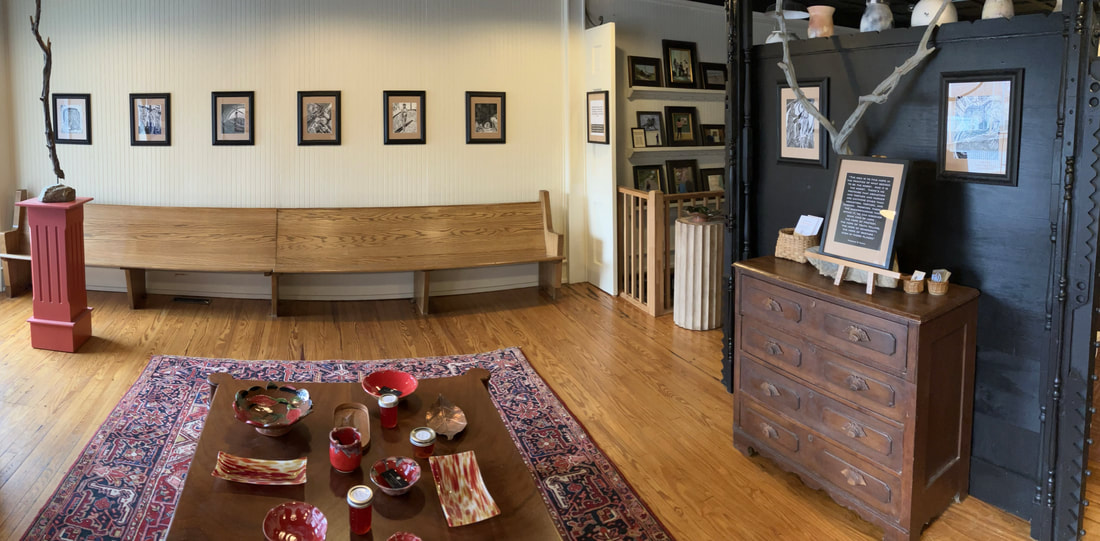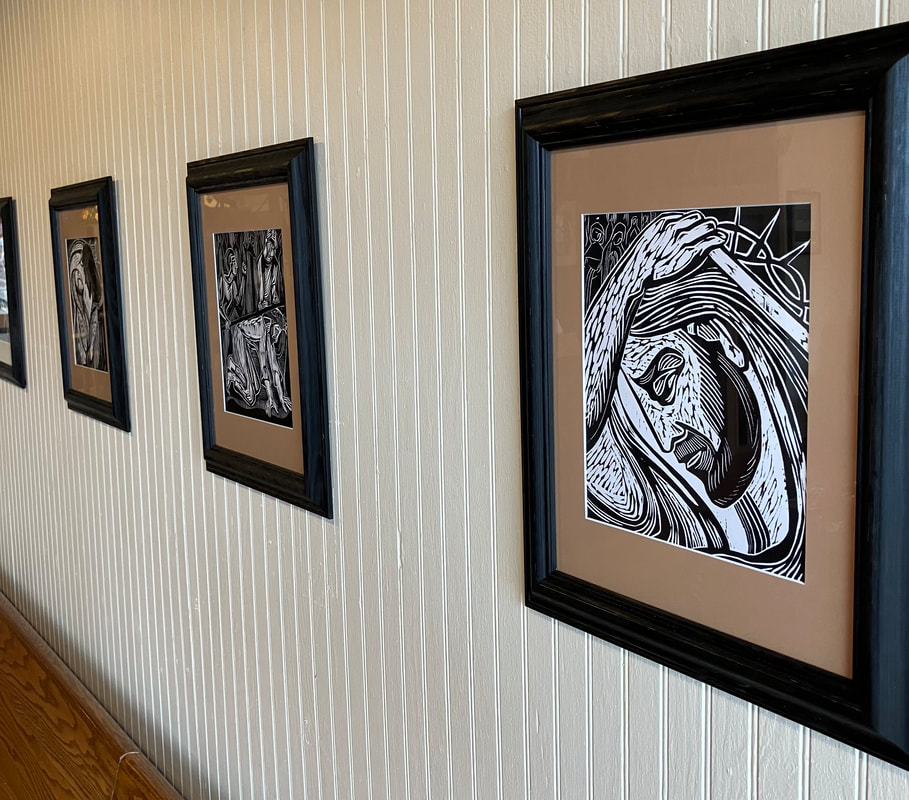STATIONS OF THE CROSS
(Lent at Goose Creek Studio)
On the Stations of the Cross:
"The idea is to find hope in the practice of what seemed to be the worst.
And it is the worst.
There’s no pretense that abduction and torture and murder
are anything other than abduction, torture, and murder.
However, there is the understanding that,
within it, we can discover some kind of hope,
the hope of protest,
the hope of truth telling,
the hope of generosity,
the hope of gesture,
even in those places."
Pádraig Ó Tuama
One of the most haunting verses of devotional poetry I have ever encountered is in the German theologian Hans Urs von Balthasar’s The Way of the Cross. In the final station, it is late Friday afternoon, Jesus’ corpse has been taken down from the cross, the body is swathed according to custom, and laid in a tomb … and von Balthasar suggests that a great and festive liturgy of forgetting begins:
So already his unquiet image
haunts heads and hearts.
Already the spirit is freed.
Already the Easter question takes shape …
but silently.
For tomorrow is only Holy Saturday.
The day when God is dead,
and the Church holds her breath.
That strange day that separates life and death
in order to join them in a marriage
beyond all human thought.
It seems to me that we hold our breath many more days of the year than this one solemn and holy-Saturday. Our world seems to endlessly churn out events in which we question the existence of a god, or we feel ensnared or helpless or lost.
I am drawn the Stations of the Cross. Not so much as a devotional piety, but as a much-loved communal pilgrimage in which the suffering of a deity mirrors so much of the human pain in our world. During these holiest of days … art and prayer and politics collide in a narrative of passion, death, and the possibility of something new. Tyrants and priests, apostles and unbelievers, history and current events, faithfulness and betrayal, partisans and zealots all become characters or themes in a great cosmic drama … all set within a regional struggle for political power, religious belief, and economic control.
This year our exhibition combines the woodblock prints of Sr. Mary Grace Thul, OP (Monastery of Mary the Queen, Girard, Illinois), the wisdom and poetry of Irish poet Pádraig Ó Tuama and Shantideva’s Boddhisattva Vow to explore the universal and interconnected experience of suffering. As the Buddha reminds us, “Within suffering itself, there is no separation between my suffering and another’s suffering.” Thul’s images root us in the gospel narrative, Ó Tuama’s collects anchor us in the human condition and what we believe to be the nature of the deity, and the Mahayana Buddhist philosopher Shantideva teaches the transformative and enlightening experience of entering the suffering of others.
Maybe, just maybe, we too can hold our breath and believe that in our current situation there is the possibility of a new life.
And so I join my hands and pray
the Buddhas who reside in every quarter:
Kindle now the Dharma’s light
For those who grope, bewildered, in the dark of pain!
May I be a guard for those who need protection;
a guide for those on the path;
a boat, a raft, a bridge
for those who wish to cross the flood.
May I be a lamp in the darkness,
a resting place for the weary,
a healing medicine for all who are sick,
a vase of plenty, a tree of miracles.
And for the boundless multitudes of living beings,
may I bring sustenance and awakening -
enduring like the earth and sky
until all beings are freed from sorrow
and all are awakened.
Shantideva’s Boddhisatva Vow


 RSS Feed
RSS Feed